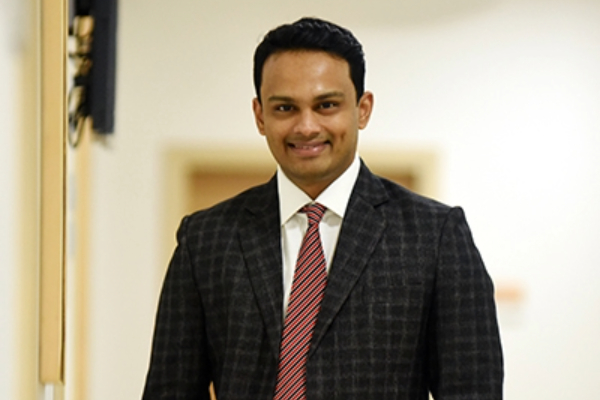Rhinoplasty Surgery
What is Rhinoplasty?
Rhinoplasty, commonly called nose job or nose plastic surgery, is a procedure that alters or modifies the shape of the nose for medical or cosmetic reasons. Due to the extent of modifications that can be done during rhinoplasty, the surgery is also referred to as nasal reconstruction. The modifications can be done to the bone, cartilage, skin, or all three as required.
Depending on the requirements, rhinoplasty is classified as functional rhinoplasty or cosmetic rhinoplasty. A cosmetic rhinoplasty focuses on the aesthetics of the nose and emphasizes changing its shape and size. Unlike this, functional rhinoplasty is reconstructive and addresses functional problems with the nose, such as breathing issues, deviated nasal septum, birth defects, nose injuries, etc.
It should be noted that rhinoplasty is a complex surgery. Therefore, when an individual considers a nose job, he/she should get in touch with an expert plastic/cosmetic surgeon who is well-trained and has ample experience in performing the procedure and delivering the best outcomes
Types of Rhinoplasty Surgery
Rhinoplasty can be divided into two types based on the technique used- open and closed. These two types are explained below:
Open Rhinoplasty
Also known as external rhinoplasty, this procedure involves making a small incision in the columella to separate the nostrils. Then the doctor gets access to the underlying bone and cartilage. As the entire structure is exposed during the procedure, the surgeon can reshape the framework with higher precision.
The open technique is usually preferred when the patient’s nose is crooked or a marked reduction or enhancement needs to be done in the nasal tip. This approach may leave a scar behind, but it usually fades away with time and becomes barely noticeable.
Closed Rhinoplasty
Also known as endonasal rhinoplasty, this surgery is more intricate as it is performed by making incisions inside the nostrils so that they are completely hidden. An incision is made in both the left and right nostrils, and the changes in shape and size are made with minimal complications. The closed technique is less invasive and causes no visible scarring.
Besides the above-mentioned types, rhinoplasty surgery is also classified based on aesthetic and functional concerns. Based on this classification, rhinoplasty can be divided into the following types:
- Reduction rhinoplastyis performed to reduce the size of the nose to achieve a more proportionate and balanced appearance.
- Augmentation rhinoplastyaims to augment or increase the size or projection of the nose with the help of implants or grafts.
- Post-traumatic rhinoplasty is performed to address nasal deformities resulting from trauma or injury. It can be done to correct nasal fractures, reposition the displaced bones or cartilage, and restore the overall nose symmetry.
- Ethnic rhinoplasty is tailored to address the aesthetic concerns of individuals from diverse ethnic backgrounds. It takes into account specific nasal characteristics and features of the individual to achieve desired natural-looking results.
- Revision rhinoplastyis performed to correct or improve the results of a previous nose job. It addresses complications, functional issues, and dissatisfaction with the initial outcome.
The above categories are generalized, and the specific techniques or approaches used for rhinoplasty will vary depending on the individual’s needs and the surgeon’s expertise.
Who Can Consider Rhinoplasty Operation?
Both men and women can consider rhinoplasty surgery as required. It can be considered to address any of the following:
- Change the nose size to make it proportionate to the facial features
- Remove the hump on the nose
- Straighten the nose bridge
- Reshape the nasal tip or projection
- Increase or decrease the size of nostrils
- Correct a birth defect or deformity
- Repair the nose after an injury
- Resolve breathing issues and open the nasal passage
If an individual is worried that his/her nose looks bulbous, upturned, too round, too large, too small, or droopy, rhinoplasty would be the most effective option to address all their concerns.
Ideal Candidate for Rhinoplasty
Though rhinoplasty is one of the most commonly performed plastic surgeries, not every individual can undergo it. Doctors follow specific eligibility criteria to determine the ideal candidate for nose plastic surgery. The criteria include the following:
- Aesthetics Concerns:The individual is unhappy with the shape, size, symmetry, and overall appearance of the nose.
- Physical Maturity:Before considering rhinoplasty, the individual has to ensure that his/her nose is fully grown. The maturity age for males is 17, whereas for females, the age is 15. The facial growth is typically complete at this age. Thus, the potential candidate should be older than the specified age.
- Good General Health:The individual should be in optimal health to undergo surgery. Individuals with severe medical conditions or illnesses, such as diabetes, heart conditions, bleeding disorders, high blood pressure, etc., are not considered good candidates for rhinoplasty.
- Non-Smoker: A good candidate for nose surgeryshould be a non-smoker or someone willing to quit smoking entirely for 12 to 18 weeks at most. Smoking can impair the body’s healing process, lead to complications, and compromise the surgery outcome.
- Realistic Expectations:The individual should have realistic expectations from the nose job and keep a positive outlook. He/she should understand that the surgery has its limitations.
The doctor analyzes these aspects during the initial consultations to determine if an individual is suitable for rhinoplasty surgery.







